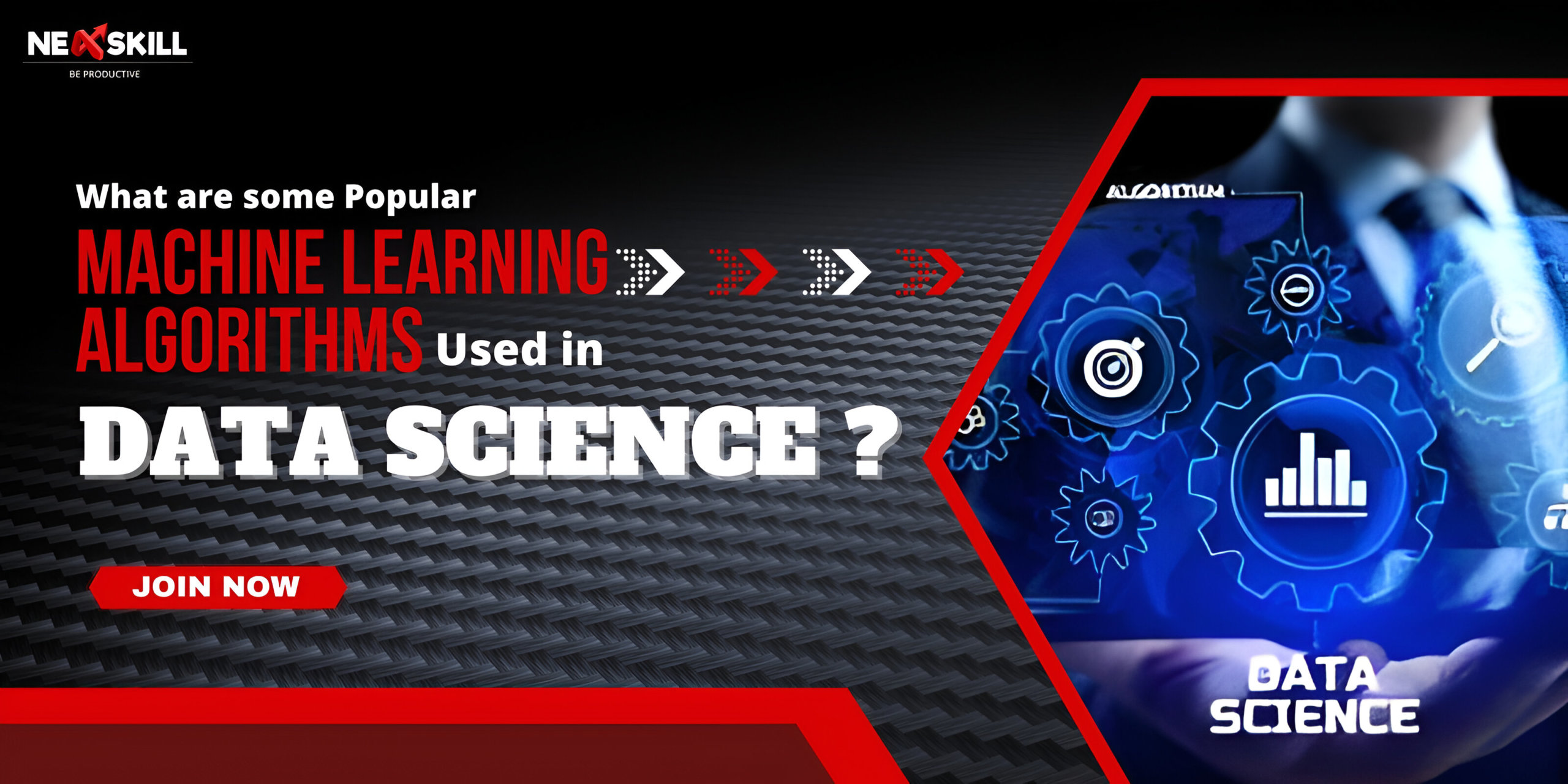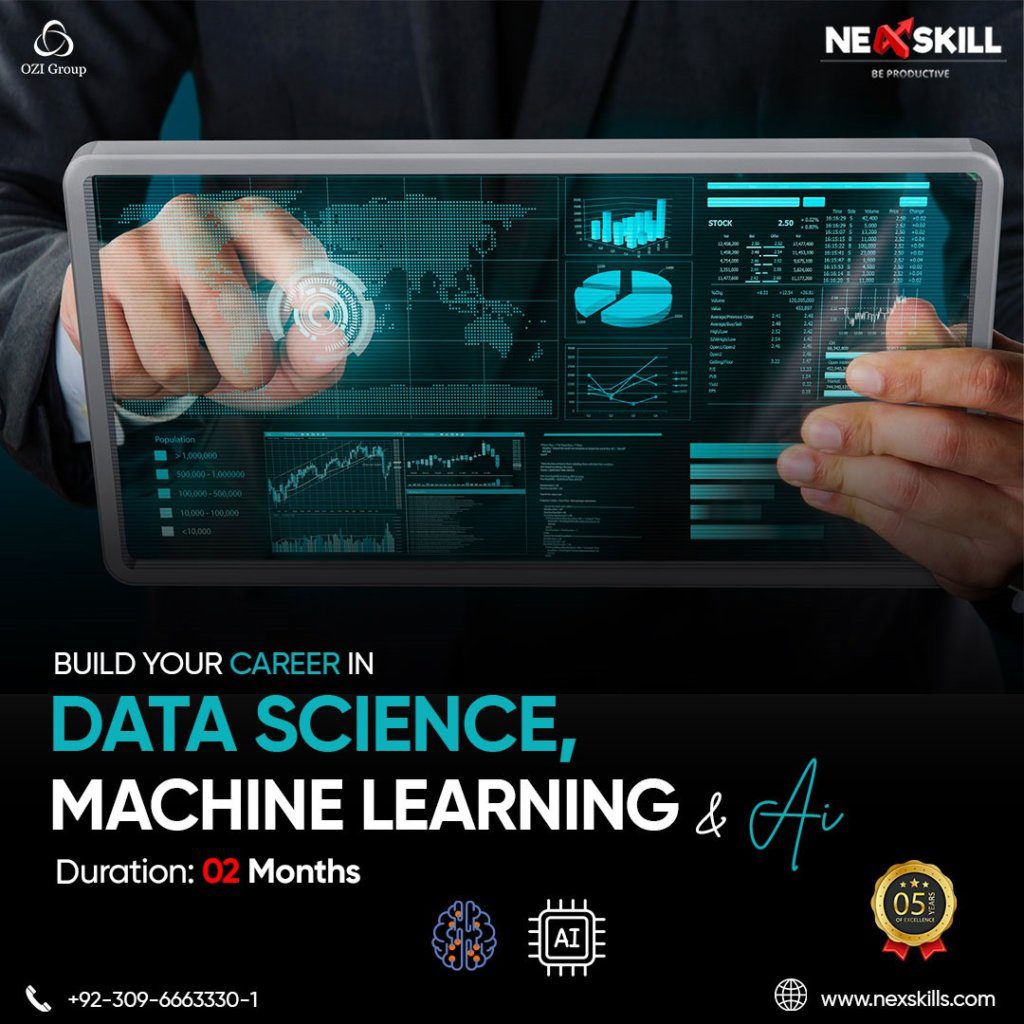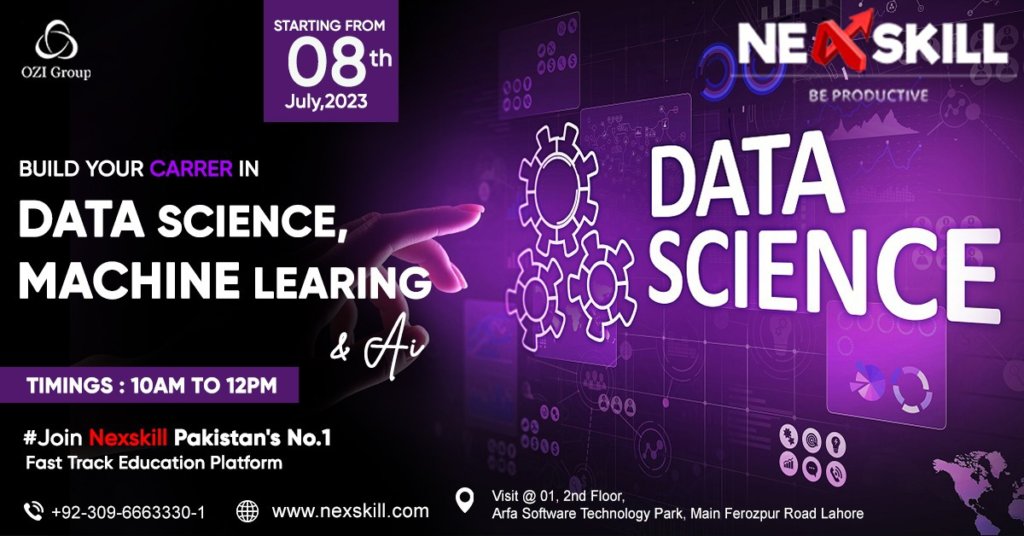
Introduction To Data Science:
Data science involves mining large datasets containing structured and unstructured data and identifying hidden patterns to extract actionable insights. So it is an interdisciplinary field that encompasses computer science, statistics, inference, machine learning algorithms, predictive analysis, and new technologies. The importance of data science lies in its innumerable uses so that is the range from daily activities like asking virtual assistants for recommendations to more complex applications like operating self-driving cars.
Machine Learning Algorithms used in Data Science
Here are some popular machine learning algorithms used in data science:
Linear Regression:
A method used for predicting the value of the dependent variable by using the values of the independent variable. So It is a fundamental algorithm for modeling the relationship between a dependent variable and one or more independent variables.
Logistic Regression:
This algorithm is commonly used for binary classification problems, where the output is a binary value (0 or 1). So it is widely used in various fields, including healthcare, finance, and marketing.
Naive Bayes:
A simple but powerful algorithm for classification based on Bayes’ theorem with an assumption of independence between predictors. It is often used for text classification, spam filtering, and recommendation systems.
k-Nearest Neighbors (kNN):
This algorithm is used for both classification and regression problems. It classifies a data point based on how its neighbors are classified. So it is a simple and effective algorithm for pattern recognition and recommendation systems.
Random Forest:
A versatile and powerful ensemble learning method that can be used for both classification and regression tasks. It builds multiple decision trees and merges their predictions to improve accuracy and prevent overfitting.
Support Vector Machines (SVM):
This algorithm is used for both classification and regression tasks. It finds the optimal hyperplane that best separates data points into different classes. SVM is effective in high-dimensional spaces and is widely used in image recognition and bioinformatics.
Decision Trees:
A popular algorithm for classification and regression tasks. So it recursively splits the dataset into subsets based on the most significant attribute, creating a tree-like structure. Decision trees are easy to interpret and visualize, making them useful for understanding feature importance.
Clustering Algorithms (e.g., K-Means):
Clustering algorithms are used for grouping similar data points together. So K-Means is a popular clustering algorithm that partitions data into K clusters based on their features. So it is widely used in customer segmentation, image compression, and anomaly detection.
Gradient Boosting Machines (GBM):
GBM is an ensemble learning method that builds decision trees sequentially, where each tree corrects the errors of the previous one. So it is known for its high predictive power and is widely used in competitions and real-world applications.
Neural Networks:
Neural networks, especially deep learning models, have gained immense popularity in recent years. They are used for complex tasks such as image and speech recognition, natural language processing, and autonomous driving. Deep learning models include Convolutional Neural Networks (CNN) and Recurrent Neural Networks (RNN).
What is Machine Learning:

Machine learning is a branch of artificial intelligence (AI) and computer science that focuses on the use of data and algorithms to imitate the way that humans learn, gradually improving its accuracy. So it involves the development of algorithms that allow computers to learn from and make predictions or decisions based on data. The concept of machine learning was coined by Arthur Samuel, a pioneer in the field of artificial intelligence and computer gaming, who defined it as “a field of study that gives computers the capability to learn without being explicitly programmed”.
How Machine Learning Works
Machine learning algorithms use statistics to find patterns in massive amounts of data, so which can include numbers, words, images, clicks, and more. These algorithms are capable of processing and analyzing diverse datasets to identify patterns, correlations, and trends. So the process involves feeding high-quality data and training machines by building machine learning models using the data and different algorithms. The choice of algorithms depends on the type of data and the kind of task being automated .
Types of Machine Learning
Machine learning is often categorized by how an algorithm learns to become more accurate in its predictions. So there are four basic types of machine learning:
Supervised Learning:
In supervised learning, the data is labeled to tell the machine exactly what patterns it should look for. So this type of learning is prevalent and involves training a model on a labeled dataset to make predictions or decisions.
Unsupervised Learning:
Unsupervised learning involves training a model on an unlabeled dataset, so allowing the algorithm to act on that information without guidance.
Semi-supervised Learning:
This type of learning uses a combination of labeled and unlabeled data for training.
Reinforcement Learning:
Reinforcement learning involves training a model to make sequences of decisions. So the model learns by receiving feedback from its environment and adapting its actions to maximize some reward.
Importance of Machine Learning:
Machine learning is not just a buzzword; it’s a powerful tool that’s changing the way we live and work. By understanding what machine learning is, so how it works, and how to get started, individuals and organizations can harness the power of machine learning to solve complex problems and make a real impact. Machine learning is a discipline of artificial intelligence that provides machines with the ability to automatically learn from data and past experiences while identifying patterns to make predictions with minimal human intervention. It is a powerful tool that is fueling technology to help workers, open new possibilities for businesses, and drive innovation across various industries .
What are the things you should know before learn machine learning?

Before delving into the world of machine learning, it’s essential to have a solid foundation in certain key areas. Here are the key things you should know before learning machine learning:
1. Mathematics
Linear Algebra:
- Understanding vectors, matrices, and operations on them is crucial for comprehending machine learning algorithms and their implementations.
Calculus:
- Knowledge of calculus, including differentiation and integration, so it is essential for understanding optimization algorithms and the underlying principles of it’s models.
Probability Theory:
- Probability forms the foundation of many ML algorithms, especially those related to statistical inference and decision-making.
2. Programming
Python:
- Python is the most widely used programming language in the field of it. Familiarity with Python and its libraries, such as NumPy and pandas, is essential for data manipulation, analysis, and model building.
R:
- While Python is the dominant language, R is also commonly used in certain domains for statistical analysis and visualization.
3. Data Handling
NumPy and pandas:
- These are essential libraries in Python for numerical computing and data manipulation. Understanding these libraries is crucial for working with data in it.
4. Statistics
Descriptive and Inferential Statistics:
- Understanding statistical concepts such as mean, median, standard deviation, hypothesis testing, and confidence intervals is vital for analyzing and interpreting data in it.
5. Data Analysis and Visualization
- Exploratory Data Analysis (EDA): Proficiency in EDA techniques is important for understanding the characteristics of the data and identifying patterns and trends.
- Data Visualization: Knowledge of data visualization tools and techniques, such as Matplotlib and Seaborn in Python, is essential for presenting and interpreting data effectively.
6. Domain Knowledge
- Understanding the domain in which you intend to apply it is crucial. Whether it’s healthcare, finance, or marketing, having domain-specific knowledge will help in framing the right questions and interpreting the results effectively.
7. Machine Learning Concepts
- Familiarity with fundamental it’s concepts, such as supervised learning, unsupervised learning, and reinforcement learning, is essential before diving into specific algorithms and models.
8. Deep Learning (Optional)
- While not a prerequisite, having a basic understanding of deep learning concepts and neural networks can be beneficial for those interested in advanced machine learning applications.
Statistical Concepts of Machine Learning:
Machine learning is a field that heavily relies on statistical principles and methods to make sense of data and make predictions. So here are some key statistical concepts that are essential for understanding and working with machine learning:
1. Probability and Statistics
Probability Distributions:
- Understanding the properties of commonly used probability distributions is crucial in it and data science. So it helps in quantifying the uncertainty inherent in predictions made by it’s models.
Descriptive and Inferential Statistics:
- Descriptive statistics are used for describing the properties of sample and population data, while inferential statistics are used to test hypotheses, reach conclusions, and make predictions.
2. Statistical Methods for Machine Learning
Maximum Likelihood Estimation (MLE):
- MLE is a common statistical method used in it for estimating the parameters of a statistical model.
Maximum A Priori Estimation (MAP):
- MAP is another statistical method used in it for estimating model parameters with prior knowledge.
3. Statistical Techniques in Machine Learning
ANOVA:
- Analysis of variance and covariance, which are used in statistical methods for supervised learning.
Regression:
- Linear, generalized linear, and nonlinear regression techniques are fundamental in supervised learning.
Classification:
- Supervised and semi-supervised learning algorithms for binary and multiclass problems.
Dimensionality Reduction and Feature Extraction:
- Techniques such as PCA, factor analysis, and feature selection are used in preprocessing data for machine learning.
4. Statistical Inference
- Inferential Statistics: Methods for quantifying properties of a population from a small sample, so it is essential for making predictions about the whole population based on sample data.
5. Relationship Between Statistics and Machine Learning
- Many machine learning techniques are drawn from statistics, and a strong understanding of probability and statistics is crucial for developing it’s models.
Why Choose Nexskill – Be Productive
Nexskill – Be Productive is an IT training institute in Pakistan that offers a wide range of professional courses, including a comprehensive Machine Learning Masterclass. So here are some compelling reasons to consider Nexskill – Be Productive for learning machine learning:
1. Wide Range of Professional Courses
Nexskill – Be Productive offers over 70 IT courses, providing a diverse selection of professional training programs to cater to various skill levels and career aspirations.
2. Machine Learning Masterclass
The Machine Learning Masterclass offered by Nexskill covers essential topics such as the importance of machine learning, supervised, unsupervised, and reinforcement learning, it’s applications in real-world scenarios, and practical hands-on experience with implementing it’s algorithms.
3. Practical Learning Approach
The course content includes an introduction to Python for it, data manipulation and visualization using libraries such as NumPy, Pandas, and Matplotlib, as well as practical aspects such as data cleaning, handling missing values, feature scaling, normalization, and model evaluation and metrics.
4. Industry-Relevant Curriculum
The curriculum is designed to provide students with a fundamental understanding of key concepts and techniques in it, so ensuring that the skills acquired are directly applicable to real-world scenarios and industry demands.
5. Experienced Instructors
Nexskill – Be Productive is equipped with experienced instructors who are well-versed in the field of machine learning and are dedicated to providing high-quality education and guidance to students.
6. Learning Platform
Nexskill – Be Productive serves as a learning platform that enables students to develop and enhance their skills, so providing a conducive environment for acquiring knowledge and practical experience in the field of machine learning.
Nexskill – Be Productive stands out as a reputable IT training institute that offers a comprehensive Machine Learning Masterclass, so providing students with the opportunity to gain valuable insights and hands-on experience in the dynamic field of it.
It’s important to consider the specific learning objectives, course structure, and practical applications offered by Nexskill – Be Productive to determine if it aligns with your learning goals and aspirations in the field of machine learning.

